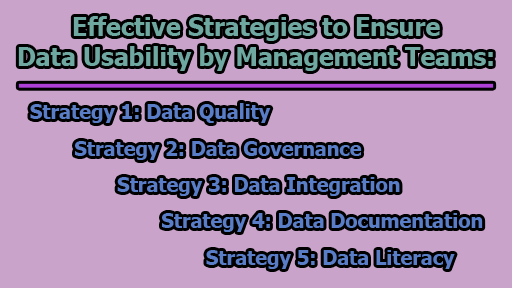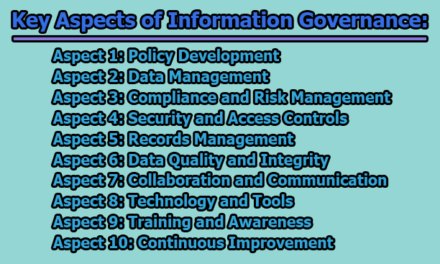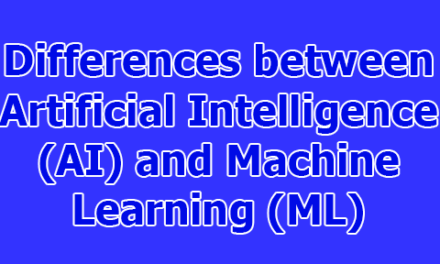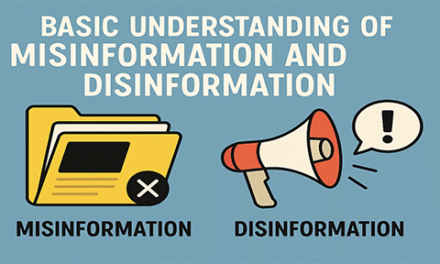Effective Strategies to Ensure Data Usability by Management Teams:
In the era of data-driven decision-making, the usability of data is paramount. Data management teams play a pivotal role in ensuring that data is easily accessible, analyzable, and applicable for various purposes. However, achieving optimal data usability is a complex task influenced by factors such as data quality, data governance, data integration, data documentation, and data literacy. In this article, we will explore some of the effective strategies to ensure data usability by management teams.
Strategy 1: Data Quality (The Foundation of Usability):
1.1 Understanding Data Quality: Data quality is the bedrock upon which the usability of data rests. It encompasses several dimensions, including accuracy, completeness, consistency, timeliness, and relevance. In the context of accuracy, data must reflect the real-world entities and their attributes faithfully. Completeness ensures that datasets contain all the required information, leaving no gaps. Consistency demands uniformity across various data sources and formats. Timeliness emphasizes the importance of having up-to-date information, while relevance ensures that the data is pertinent to the task at hand.
1.2 Strategies for Ensuring Data Quality: To maintain high data quality, data management teams employ a combination of strategies, standards, and tools. Implementing data quality standards involves establishing rules and guidelines that data must adhere to. Policies dictate how data should be handled, ensuring a consistent approach throughout the organization. Procedures define the step-by-step processes for data collection, validation, and cleansing. Data quality tools, such as data profiling, cleansing, validation, and monitoring tools, play a crucial role in identifying and rectifying issues in the data. These tools enable teams to scrutinize datasets, clean up inconsistencies, and monitor data health over time.
1.3 Establishing Metrics for Data Quality: Measuring data quality is integral to maintaining and improving usability. Data management teams establish metrics and indicators that provide a quantitative assessment of data quality. Metrics may include data completeness, accuracy, timeliness, and freshness. These measurements allow teams to assess the performance of data quality initiatives, identify areas for improvement, and communicate the health of the data to stakeholders. Regular reporting on these metrics ensures that data quality remains a priority within the organization and helps build trust among data users.
Strategy 2: Data Governance (Navigating the Data Landscape):
2.1 Defining Data Governance: Data governance is a comprehensive framework that outlines the roles, responsibilities, rules, and processes governing the management of data within an organization. It ensures that data is aligned with business objectives, complies with regulatory requirements, and remains secure from unauthorized access or misuse. Effective data governance provides a structure for decision-making, establishes accountability, and fosters a culture of data stewardship throughout the organization.
2.2 Implementing Data Policies and Standards: A crucial aspect of data governance involves the establishment and enforcement of data policies, standards, and guidelines. These serve as the foundation for consistent data management practices. Data policies define the overarching principles guiding data usage, privacy, and security. Standards provide specific criteria and specifications for data handling, ensuring uniformity. Guidelines offer practical recommendations for implementing policies and standards in daily operations. By clearly defining these aspects, data management teams create a roadmap for data governance that aligns with the organization’s strategic objectives.
2.3 Leveraging Data Governance Tools: To operationalize data governance, teams utilize a suite of tools and platforms designed to facilitate governance activities. Data catalogs, for instance, provide a centralized repository for metadata, allowing users to discover, understand, and trust the available data assets. Data dictionaries document the definitions and relationships of data elements, enhancing clarity. Data lineage tools visualize the flow of data across systems, helping ensure data integrity and compliance. Data audits provide a mechanism for assessing and validating adherence to data governance policies. Leveraging these tools, data management teams can systematically document, manage, and monitor data assets, promoting transparency and accountability.
Strategy 3: Data Integration (Creating a Unified Data Landscape):
3.1 The Significance of Data Integration: Data integration is a crucial process that involves combining data from disparate sources and formats into a unified and consistent view. This unified view is essential for ensuring that data is usable across the organization, providing decision-makers with a comprehensive and coherent understanding of the information at hand. Without effective data integration, siloed data can lead to inefficiencies, inaccuracies, and missed opportunities.
3.2 Tools and Methods for Data Integration: Data management teams employ a variety of tools and methods to achieve effective data integration. Extract, transform, and load (ETL) processes are widely used to extract data from source systems, transform it into a standardized format, and load it into a target system. Data pipelines automate the flow of data between systems, ensuring a seamless process. Data lakes serve as repositories for raw, unstructured data, while data warehouses provide a structured and organized storage solution. Data marts are specialized subsets of data warehouses, catering to specific business units or functions. By strategically combining these tools and methods, data management teams can streamline the ingestion, transformation, storage, and delivery of data, enhancing its usability.
3.3 Best Practices for Data Integration: To ensure the quality and reliability of data integration, teams adhere to best practices. Data modeling involves creating a blueprint of the data landscape, defining entities, relationships, and attributes. Data mapping establishes the connections between data elements in source and target systems, ensuring accurate transformation. Data quality checks verify the integrity of data throughout the integration process, identifying and rectifying errors. Data testing involves systematically validating the integrated data to ensure it meets the specified requirements. By incorporating these best practices, data management teams can enhance the accuracy, consistency, and reliability of the integrated data, contributing to overall data usability.
Strategy 4: Data Documentation (Providing Context for Understanding):
4.1 The Role of Data Documentation: Data documentation is a critical component in enhancing the usability of data. It involves creating and maintaining information that describes the characteristics, structure, meaning, and usage of data. Without proper documentation, users may struggle to understand the context and relevance of the available data, hampering their ability to make informed decisions.
4.2 Creating and Maintaining Data Documentation Artifacts: Data management teams are responsible for creating and maintaining various data documentation artifacts. These artifacts include data schemas, which outline the structure of the data, data definitions that provide clear meanings for each data element, data descriptions offering insights into the purpose and context of the data, data annotations providing additional notes or comments, and data manuals offering comprehensive guidance on the usage and interpretation of the data. These artifacts collectively serve as a knowledge base for data users, offering them the necessary information to navigate and comprehend the available datasets.
4.3 Employing Data Documentation Tools and Standards: To streamline the process of data documentation, teams utilize dedicated tools and adhere to documentation standards. Metadata management systems centralize information about data assets, facilitating easy access and retrieval. Data annotation tools enable teams to add contextual notes directly to the data, enhancing understanding. Adherence to documentation formats ensures consistency in how information is presented across various datasets. By employing these tools and standards, data management teams can organize, manage, and disseminate data documentation efficiently, making it an integral part of the data usability strategy.
Strategy 5: Data Literacy (Empowering Users for Effective Data Utilization):
5.1 Understanding Data Literacy: Data literacy is the ability to understand, interpret, and communicate data effectively. It is a fundamental skill that empowers users to access, analyze, and apply data in their decision-making processes. Without adequate data literacy, even the highest quality and well-governed data may go underutilized.
5.2 Fostering Data Literacy Through Training and Resources: Data management teams play a crucial role in fostering data literacy within an organization. They achieve this by providing comprehensive training programs and resources that enable users to develop the necessary skills. These programs cover aspects such as understanding data structures, interpreting data visualizations, and effectively communicating insights derived from data. By investing in continuous education and training initiatives, data management teams ensure that users at all levels of the organization are equipped with the knowledge required to navigate and utilize data effectively.
5.3 Cultivating a Data Culture: Beyond formal training, data management teams work towards cultivating a data culture within the organization. A data culture is an environment where data is valued, trusted, and shared collaboratively. This involves instilling a mindset where employees recognize the importance of data in decision-making processes and feel encouraged to explore and experiment with data. By fostering a data-centric mindset, organizations can capitalize on the collective intelligence of their workforce, driving innovation and efficiency.
5.4 Leveraging Data Literacy Tools and Techniques: In addition to training and cultural initiatives, data management teams leverage various tools and techniques to enhance data literacy. Data visualization tools enable users to comprehend complex datasets through graphical representations. Data storytelling techniques help convey insights in a narrative format, making information more relatable. Data dashboards provide interactive interfaces for users to explore and interact with data dynamically. By incorporating these tools and techniques, data management teams empower users to not only understand data but also to communicate their findings effectively, thereby maximizing the usability of data across the organization.
In conclusion, ensuring data usability is a multifaceted endeavor that requires the concerted efforts of data management teams. By focusing on data quality, governance, integration, documentation, and literacy, organizations can unlock the full potential of their data assets. As we continue to evolve in the data-centric landscape, the role of data management teams becomes increasingly critical in not only managing data but also in making it a valuable and usable asset for the entire organization.

Library Lecturer at Nurul Amin Degree College










